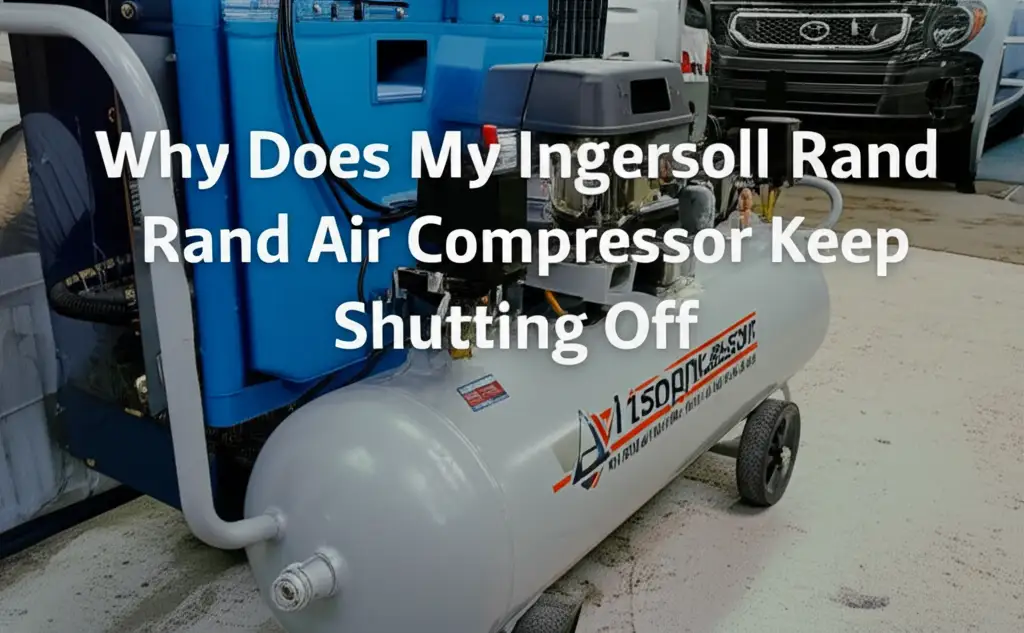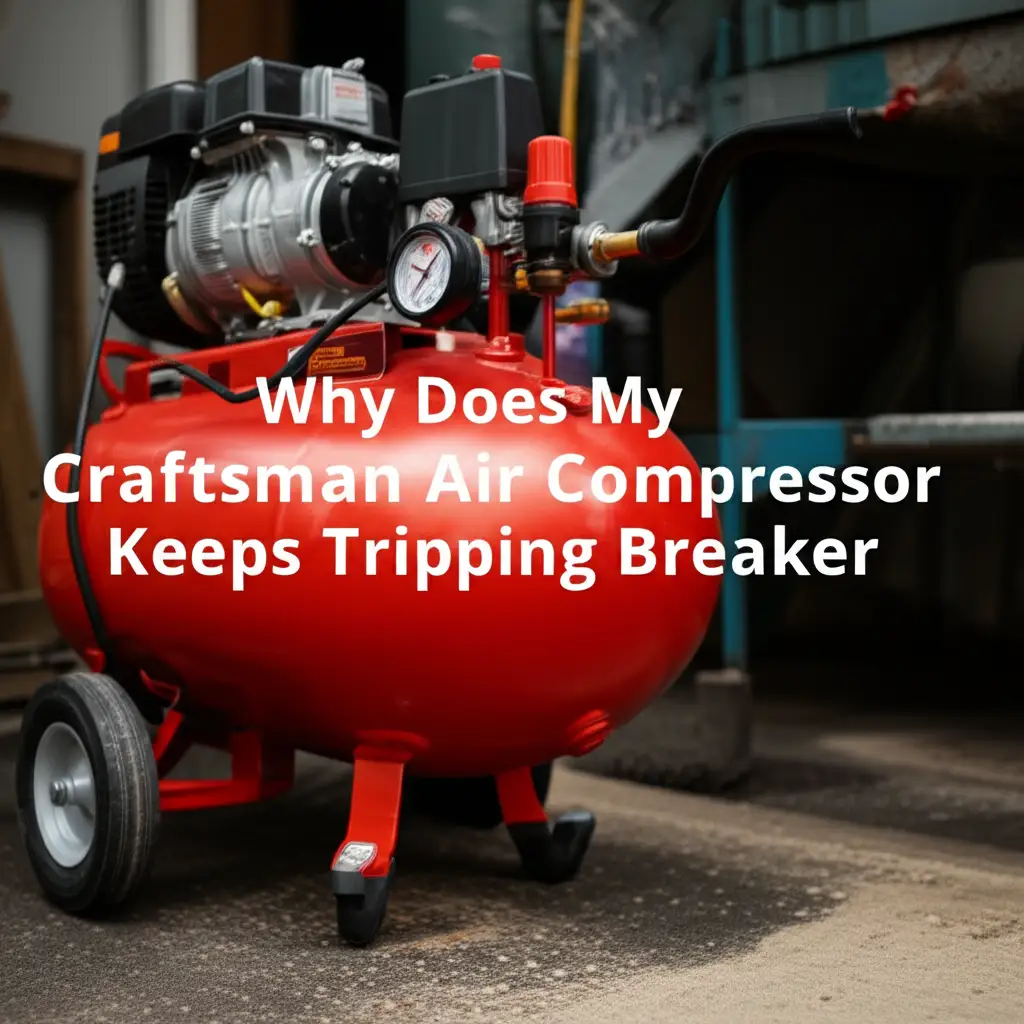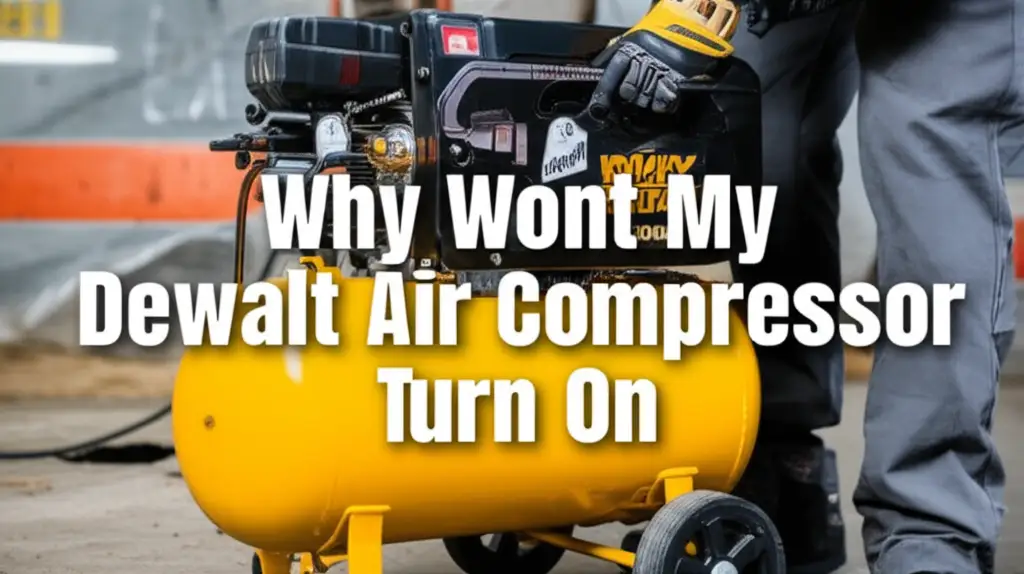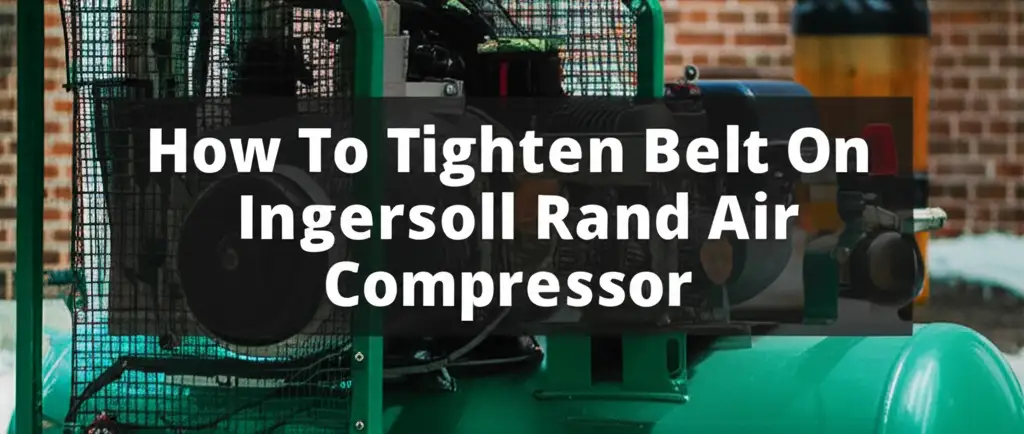· Todd Martin · Air Compressors · 13 min read
Why Does My Ingersoll Rand Air Compressor Keep Shutting Off

Troubleshooting Your Ingersoll Rand Air Compressor Shutting Off
It is frustrating when your Ingersoll Rand air compressor keeps shutting off. This problem interrupts your work and signals a potential issue. I understand how essential a reliable air compressor is for many projects. Let me help you diagnose and fix this common problem. This article will explore the main reasons your Ingersoll Rand air compressor might be shutting off. We will also cover practical steps you can take to prevent future shutdowns.
Takeaway:
- Check for Overheating: Ensure proper ventilation and oil levels.
- Inspect Electrical Connections: Look for tripped breakers, loose wires, or faulty outlets.
- Evaluate Pressure Switch: Test its function and adjust settings if necessary.
- Perform Regular Maintenance: Clean filters, drain the tank, and monitor oil quality.
Why does my Ingersoll Rand air compressor keep shutting off?
Your Ingersoll Rand air compressor likely shuts off due to overheating, electrical issues, or pressure system malfunctions. Common culprits include a tripped thermal overload, inadequate power supply, a faulty pressure switch, or low oil levels. Addressing these specific areas will often resolve the problem and restore normal operation.
Overheating: A Primary Cause for Shutdowns
One of the most frequent reasons your Ingersoll Rand air compressor keeps shutting off is overheating. Air compressors generate a lot of heat during operation. Manufacturers design them with safety features like a thermal overload switch. This switch protects the motor from damage by automatically cutting power if the temperature rises too high.
Several factors contribute to an air compressor overheating. Running the compressor continuously for extended periods without adequate rest is a common one. Poor ventilation around the unit can also trap heat, leading to higher operating temperatures. Always ensure your compressor has plenty of open space for airflow. A lack of proper lubrication, due to low oil levels or incorrect oil type, increases friction and heat.
Signs of Overheating
You might notice a distinct burning smell when your compressor overheats. The unit itself can feel very hot to the touch. Sometimes, the compressor will shut down abruptly, and you will hear a click from the thermal overload switch. Allowing the compressor to cool down for an hour or so often allows it to restart. However, this is a temporary fix.
Preventing Overheating
To prevent overheating, always operate your compressor in a well-ventilated area. Do not place it against a wall or in a tight corner. Regularly check the oil level and ensure you are using the correct type of oil for your Ingersoll Rand model. Proper lubrication reduces friction and heat. If you need help identifying the right lubricant, I have found that knowing what kind of oil does an Ingersoll Rand air compressor take is crucial for preventing these issues.
Electrical Issues: Powering Down Unexpectedly
Electrical problems are another major reason an Ingersoll Rand air compressor might shut off. An air compressor requires a significant amount of power to run its motor. Any interruption or inadequacy in the power supply can cause it to stop unexpectedly. This is often a safety mechanism to prevent damage to the motor or electrical system.
One common electrical issue is a tripped circuit breaker. Air compressors draw high starting current. If the circuit is overloaded or the compressor has a fault, the breaker will trip to protect the circuit. You might also encounter issues with faulty wiring or loose connections. These can lead to intermittent power supply or cause the compressor to draw too much current.
Checking Electrical Components
First, check the circuit breaker connected to your compressor. If it is tripped, reset it. If it trips again immediately, there is an underlying electrical problem that needs professional attention. Inspect the power cord for any damage, fraying, or cuts. A damaged cord can cause a short circuit or an inconsistent power supply.
Ensure the electrical outlet itself is functioning correctly. Try plugging in another high-power appliance to verify the outlet works. Avoid using long or thin extension cords. These can cause a voltage drop, especially under load, which can lead to the compressor motor struggling and eventually shutting off. Consider that a similar issue can occur with other appliances, like why does my window air conditioner keep tripping the breaker.
Pressure Switch Malfunctions: The Brain of Your Compressor
The pressure switch acts as the “brain” of your air compressor. It monitors the air pressure inside the tank and controls when the motor starts and stops. When the pressure drops below a certain point, the switch tells the motor to turn on and refill the tank. Once the desired pressure is reached, it tells the motor to shut off. If this critical component malfunctions, your Ingersoll Rand air compressor keeps shutting off erratically or fails to maintain pressure.
A common issue is a faulty diaphragm inside the pressure switch. Over time, this rubber component can become stiff or cracked, preventing accurate pressure readings. This leads to the compressor either failing to start, over-pressurizing, or shutting off prematurely. Corroded electrical contacts within the switch can also disrupt the signal to the motor. Dirt and debris can accumulate, preventing proper operation.
Diagnosing Pressure Switch Issues
You can often test a pressure switch by observing the compressor’s behavior. If the compressor cycles on and off rapidly, or if it shuts off long before reaching its maximum pressure, the switch might be faulty. Sometimes, adjusting the pressure switch settings can resolve minor issues. However, only attempt this if you are familiar with the specific model’s manual. Incorrect adjustments can be dangerous.
If the switch feels loose or visibly damaged, it likely needs replacement. Before doing any work on the pressure switch, always ensure the compressor is unplugged and the tank is fully depressurized. Safety is paramount when dealing with pressurized systems. A malfunctioning pressure switch can also lead to the compressor overworking and overheating, compounding the problem.
Low Oil Levels or Incorrect Oil Type: A Lubrication Problem
Proper lubrication is vital for the health and longevity of your Ingersoll Rand air compressor. The oil reduces friction between moving parts, dissipates heat, and prevents wear. If your compressor operates with low oil levels, internal components will experience increased friction. This generates excessive heat and can lead to immediate shutdown as a protective measure.
Using the wrong type of oil can be just as damaging as having too little. Air compressors require specific grades and types of oil, often non-detergent or synthetic, designed for high-pressure and high-temperature environments. Automotive oils, for instance, contain detergents that can foam up or leave deposits in a compressor pump. This reduces lubrication efficiency and causes premature wear and heat buildup.
Checking and Changing Compressor Oil
Regularly check your compressor’s oil level. Most Ingersoll Rand models have a dipstick or a sight glass for easy monitoring. If the level is below the minimum mark, add the manufacturer-recommended oil. Be careful not to overfill, as this can also cause problems like excessive pressure or oil carryover.
It is also important to change the oil according to the maintenance schedule in your user manual. Old, contaminated oil loses its lubricating properties over time. When performing an oil change, always use the exact type of oil specified by Ingersoll Rand. For detailed information, I recommend checking our guide on what kind of oil does an Ingersoll Rand air compressor take. This ensures your compressor runs smoothly and prevents unnecessary shutdowns.
Clogged Air Filter and Airflow Restrictions: Breathing Problems
Just like any machine that uses air, your Ingersoll Rand air compressor needs clean, unrestricted airflow to operate efficiently. The air filter prevents dust, dirt, and debris from entering the compressor pump. If this filter becomes clogged, the compressor “struggles to breathe.” This restriction in airflow forces the motor to work harder to pull in enough air.
When the motor works harder, it generates more heat. This increased heat can quickly lead to the thermal overload switch tripping, causing your compressor to shut off. A clogged filter also reduces the compressor’s overall efficiency. It takes longer to build pressure, and the motor runs for extended periods, further increasing the risk of overheating and shutdown.
Maintaining Air Filters
Regularly inspect your air filter. Depending on your working environment, this might need to be done weekly or monthly. If the filter appears dirty, discolored, or clogged with debris, it needs cleaning or replacement. Some air filters are washable, while others are designed for single use. Always refer to your compressor’s manual for specific instructions.
A clean air filter ensures optimal airflow to the pump, reducing strain on the motor. This simple maintenance step significantly contributes to preventing your Ingersoll Rand air compressor from shutting off unexpectedly. It also extends the lifespan of your compressor by protecting its internal components from harmful particles.
Motor or Pump Problems: Internal Wear and Tear
Beyond simple maintenance issues, your Ingersoll Rand air compressor might shut off due to more significant internal problems with its motor or pump. These components are the core of the compressor. They bear the brunt of continuous operation. Over time, wear and tear can lead to inefficiencies or complete failure.
A failing motor might have worn bearings, which create excessive friction and heat. This extra heat can trigger the thermal overload. Motor windings can also degrade or short out. This leads to increased current draw and potential shutdown, or even a tripped circuit breaker. Similarly, issues within the pump, such as worn piston rings or valves, can reduce its efficiency. A pump that cannot build pressure quickly enough will cause the motor to run continuously, leading to overheating and shutdown.
Identifying Deeper Issues
Listen for unusual noises coming from your compressor. Grinding, squealing, or knocking sounds often indicate worn bearings or other mechanical failures within the motor or pump. If the compressor takes an unusually long time to build pressure, or if it struggles to reach its maximum pressure, the pump might be losing efficiency. A persistent smell of burning electrical components suggests a motor issue.
Diagnosing and repairing motor or pump problems often requires specialized tools and expertise. While basic maintenance is DIY-friendly, internal component failures usually warrant professional service. Attempting complex repairs without proper knowledge can cause further damage or pose safety risks. Regular maintenance, including checking oil and filters, can help prevent these major component failures from occurring prematurely.
Tank Issues: Condensation and Pressure Buildup
The air compressor tank serves as a reservoir for compressed air. However, as air is compressed, moisture in the air condenses and collects at the bottom of the tank. This condensation is normal, but if not drained regularly, it can lead to problems that cause your Ingersoll Rand air compressor to shut off.
Excessive water buildup reduces the tank’s capacity for compressed air. This means the compressor has to run more frequently and for longer durations to maintain pressure. The increased workload puts extra strain on the motor and pump, leading to overheating and premature shutdowns. Water in the tank can also corrode the tank’s interior over time, potentially leading to rust flakes being carried into air lines or even weakening the tank itself. Rust can also cause issues with the check valve or pressure relief valve, preventing them from operating correctly.
Draining the Air Tank
Always drain the air tank after each use or at least weekly, depending on the humidity and frequency of use. Most Ingersoll Rand compressors have a drain valve, typically located at the bottom of the tank. To drain, ensure the compressor is off and unplugged, then open the valve to release the air and water. Keep the drain valve open until all pressure is released and only water comes out.
Draining the tank is a simple yet crucial maintenance step that prevents numerous issues, including unnecessary shutdowns. It ensures your compressor operates efficiently and prolongs its lifespan. If you need more detailed instructions, our guide on how to clean air compressor tank provides comprehensive steps. This regular practice is essential for optimal performance and safety.
FAQ Section
How often should I check the oil in my Ingersoll Rand air compressor?
I recommend checking the oil level every 8-10 hours of operation or at least weekly for regular use. For heavy use, check it daily. Always use the dipstick or sight glass to ensure the level is within the recommended range. This prevents low oil issues that cause overheating and shutdowns.
Can a dirty air filter cause my compressor to shut off?
Yes, a dirty air filter absolutely can cause your air compressor to shut off. A clogged filter restricts airflow to the pump, forcing the motor to work harder. This extra strain and heat can trigger the thermal overload switch, leading to a shutdown. Regular filter cleaning or replacement is important.
What should I do if my compressor keeps tripping the circuit breaker?
If your compressor keeps tripping the circuit breaker, first ensure it’s on a dedicated circuit with sufficient amperage. Avoid using long or thin extension cords. If the breaker still trips, it could indicate an issue with the compressor’s motor, wiring, or a short circuit. Consult an electrician or a compressor technician.
How do I know if my compressor’s pressure switch is faulty?
You might suspect a faulty pressure switch if your compressor cycles on and off too frequently, fails to start, or stops before reaching its set pressure. If it builds pressure very slowly or over-pressurizes and the relief valve blows repeatedly, these are also strong indicators of a malfunctioning switch.
Is it normal for an air compressor to get hot?
Yes, it is normal for an air compressor to get warm during operation due to the work of compressing air. However, it should not get excessively hot to the touch or emit a burning smell. Excessive heat is a sign of overheating, which often triggers the thermal overload and causes the unit to shut off.
Can using a long extension cord affect my compressor’s performance?
Yes, using a long or inadequately gauged extension cord can significantly affect your compressor’s performance. It can cause a voltage drop, especially under load. This low voltage makes the motor work harder, draw more current, generate more heat, and can ultimately lead to shutdowns or even motor damage.
Conclusion
Understanding why your Ingersoll Rand air compressor keeps shutting off is the first step toward a lasting solution. I know it can be frustrating to have your work interrupted by these sudden stops. Most issues stem from common problems like overheating, electrical supply issues, pressure switch malfunctions, or basic maintenance oversights like low oil or a clogged filter. By systematically checking these areas, you can diagnose and often fix the problem yourself.
Regular maintenance is key to preventing these frustrating shutdowns. Make sure to check oil levels, clean air filters, and drain the tank regularly. Addressing minor issues proactively will help your Ingersoll Rand air compressor run smoothly and efficiently for years to come. If you encounter complex electrical or motor problems, do not hesitate to seek professional help. Your compressor is a valuable tool, and proper care ensures its longevity and reliability.





